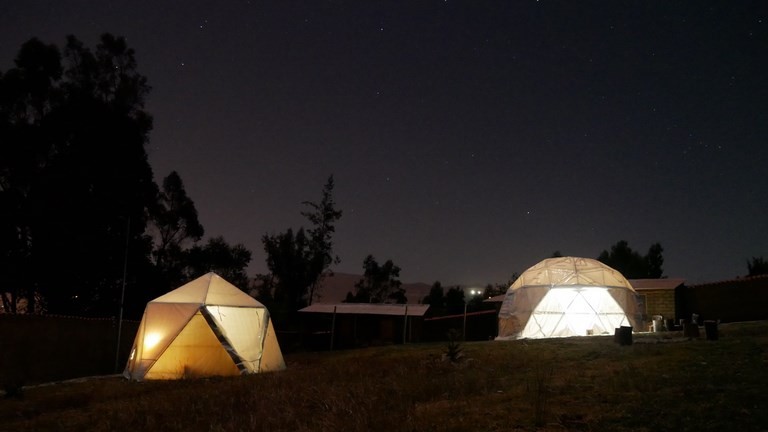Our trekkings
Here are the different treks that we can offer you. We can organise a transfer between Lima and Huaraz, as well as an acclimatisation programme so that your walk goes smoothly. It is also possible to integrate the different treks into a trip with other stages to create a "mixed" trip.
Our trekking options
Trek to Llanganuco and Laguna 69
2 daysCordillera Blanca
Levels of difficulty of our trekkings
 | Easy | It's not really a long walk, max 2 hours one way, without much gradient and located in an altitude not too high. |
|---|---|---|
 | Easy to moderate | Not a technical hike, but already higher up. Or a walk without too much altitude and not too high in gradient but a long distance. This is usually a half day or full day outing |
 | Moderate | Walk half day or full day. There may already be a difference in altitude, in which case it is not yet too high. And if you are more than 4000 meters, it will be a walk without too much altitude. The treks on several days are very few with a "moderate" level. |
 | Moderate to difficult | Climbing has started! walking full day, more than 4000 meters with a certain gradient. Or a trekking for several days, less than a week, without necessarily pass every day |
 | Difficult | Trekking for more than a week, during which you will almost always be between 4000 and 5000 meters above sea level, with almost every day a pass to cross. Each day of the trek evaluated separately is not necessarily difficult, but the repetition of efforts for more than a week will make this trek difficult. There are some day hikes classified as "difficult". This is due to altitude, elevation and high mileage. |
Acclimatisation before a trek
Before embarking on a multi-day trek, it is very important to be sufficiently acclimatised to the altitude. Ideally, you should have spent at least 3 to 4 days at an altitude of more than 3000 metres and have done two walks at an altitude of about 4500 metres. It is very risky to spend a night in a tent at an altitude of over 4000 metres without first testing your acceptance of altitude by doing day trips. Getting used to altitude is not a question of age or physical condition. It can be random, stemming from the individual's current physiological state, state of fatigue, etc. Trekking at the beginning of a trip to Peru, after hours of flying and busing, is not recommended without a rest and an adequate acclimatisation period. If you are planning a trip to Peru, plan to do your trekking at the end of the trip. Having travelled at altitude (e.g. Cuzco, Titicaca, Arequipa) and then briefly (2-3 days) back up the coast before heading up to Huaraz is not a problem for your acclimatisation. The benefits of your stay at altitude will not be lost.
Why not spend a few days at our Domos Cordillera Blanca lodge to gently acclimatise yourself?

RESPONSIBLE TREKKINGWhat does it mean?
We do not lie! We explain clearly what we’ll organize and then we really organize what we have explained.
We organize our trekkings with official guides. The Tourist Police told us that several of those “cook” guides whom left their group alone on the mountain after encountering a problem.
We do not accept in our groups participants that are not acclimated to the altitude.
We pay our employees fairly and immediately after they’ve finished the job. One more thing that seems obvious! But so many times we’ve met mule-drivers, guides or cooks who haven’t been paid since six month. Is really easy to undercut the prices working that way.
We don’t overload the donkeys that carry the equipment. An overloaded donkey gets wounded, bleeds and even dies in the right middle of the trek. No comment...
We go trekking with a rescue horse since there is no mountain rescue helicopter in the area.
We take an hyperbaric chamber on some trekkings or for groups that we consider «risky”.
We take a satellite phone in our treks as there is no phone coverage there.
We provide enough food, balanced and tasty and we respect dietary restrictions.
We give food enough to our staff, it seems obvious but if we make it clear it’s because so many cheap agencies which don’t care about it.
During the trekking we provide high-quality camping/technical equipment.
We generate the least amount of plastic waste possible.
We bring back all the garbage to Huaraz, it’s also seems really evident, however we still find a lot of trash thrown by the underpaid staff of irresponsible agencies.
We work with a trustworthy staff that showed us by their behavior that they are responsible, reliable and honest.
Finally, it’s difficult for the client to select among the different offers, to weigh up the pros and the cons, according to his budget or his awareness.
Sometimes, we could pay the fair price but it feels attractive and excitant to think we’ve paid less than other people, and maybe after haggling... but at what cost? at the expense of whom?